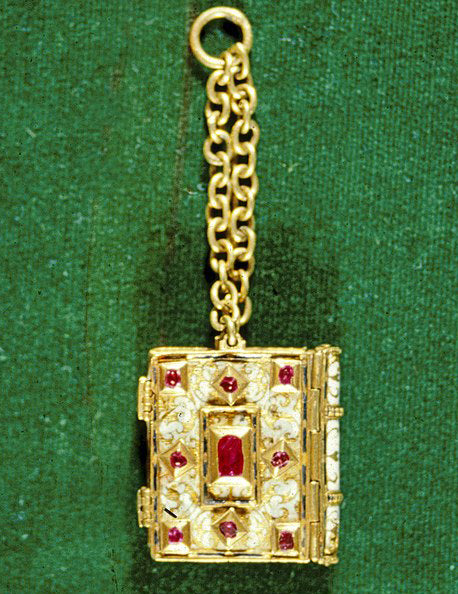
Illustration in the top: Goldsmiths in the Middle Ages, Niclaus Manuel, 1515
The major jewelry workshops in the late Middle Ages (1200 - 1450) were in cities such as Paris, Cologne, and Venice. However, they still borrowed elements of style and form from the classical world. The jewelry of the early Middle Ages represents the style of larger goldsmith's work, just in miniature form. Therefore, jewelry from that time has characteristics from Ottonian and Romanesque goldsmiths.
From the 13th century, an era began where a great sense of self-confidence can be traced in Western European handicrafts and in the style and type of jewelry that was worn. The jewelry became brighter and lighter in character under the influence of the Gothic style, which is clearly seen in jewelry from Paris in the period 1225 - 1250. Gradually, this style spread to all of Western Europe.
Portraying a goldsmith's workshop was popular, for example, as a symbol of noble art in spirit as well as hand. The motif shown here was painted by the Swiss Niclaus Manuel in 1515 on order from the guild of painters and goldsmiths in Bern and portrays St. Eloy (as seen in the halo) as an apprentice in a goldsmith's workshop. The master on the right is engraving a mount on a gold ring. He holds the ring in a soft white cloth in his left hand and executes the design with a sharp tool in his right.
Many other types of tools such as files, pliers, chisels, dividers are scattered on the lower bench. There is also a box with weights, mostly for determining the value of the products. The heavy round shapes of the jewelry of the early Middle Ages were replaced by angular or lobed designs, and they replaced the 3-dimensional richness with light, flat 2-dimensional designs on which stones and pearls were set separately from the metal.
Interestingly, earrings and bracelets completely disappeared from fashion from 1200 - 1400, except in Southern Italy and Sicily where the lingering Byzantine influence and, in Spain, the Moorish influence kept them in fashion until the end of the 15th century. But Central and Northern Europe had found its own identity, as we can see in the development of jewelry






